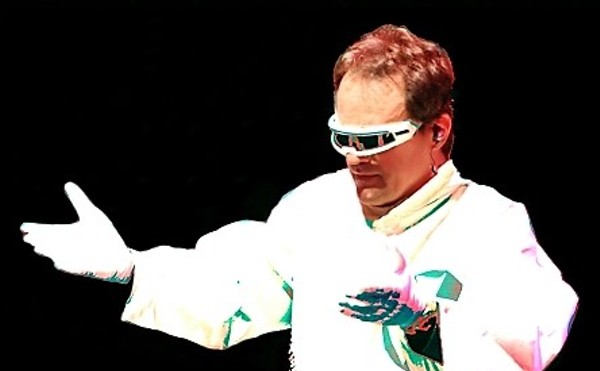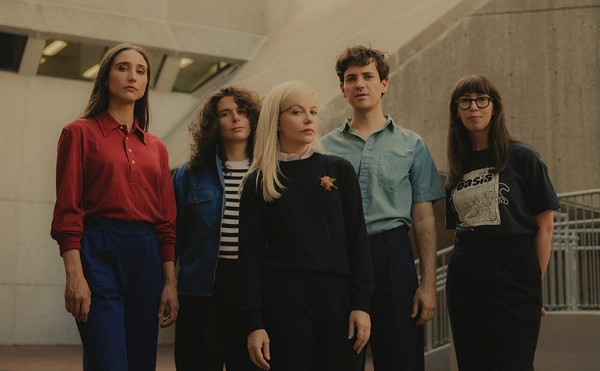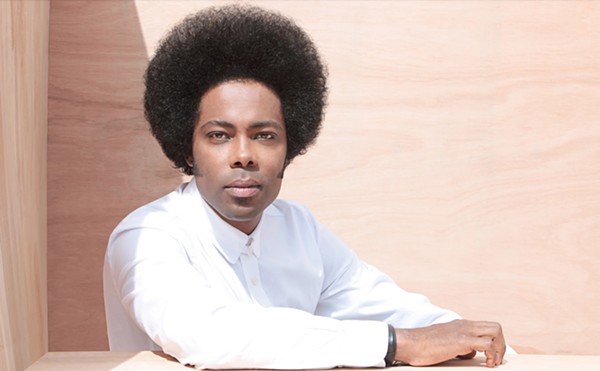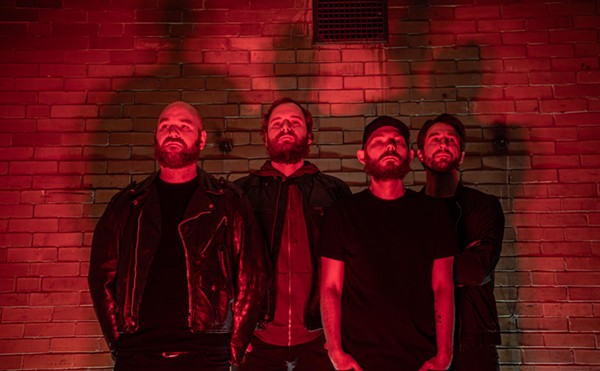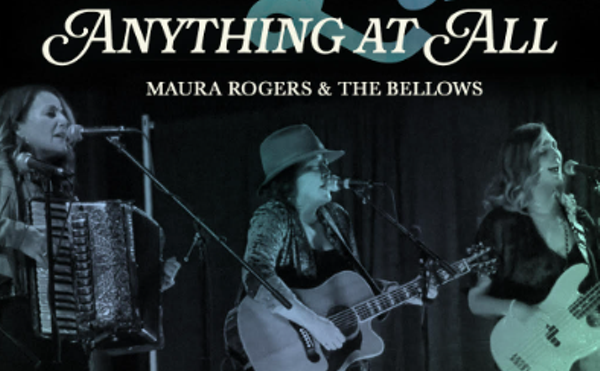This album marked the Great Divide of his career. He had boasted that he could put together a rock band to rival Jimi Hendrix, and Bitches Brew was the result. Many critics denounced it as a sellout. Nonsense. Although Bitches Brew became Davis's biggest-selling album, it defied all conventional commercial wisdom. It featured no vocals, it was a two-LP set that featured only six pieces (two of them clocking in at more than 20 minutes), and it was experimental music. Who could expect to sell great numbers of that?
Davis, as much a competitor as a musician, wanted for various reasons to make music that was popular. In jazz terms, he had been doing so for quite some time. As small as the jazz market was, Davis was selling a respectable 60,000 units with most of his releases. Not spectacular business, but hey, how many of us could convince 60,000 of our closest friends to buy something we produced?
By going gold, Bitches Brew outstripped those earlier sales by several hundred percent. Davis had hit upon a truth articulated by Frank Zappa: "Kids will buy twelve-tone music if you put a bugaloo beat behind it." Bitches Brew wasn't as obvious as a bugaloo beat, but propulsive rhythm made the unusual textures of the front line--Davis's trumpet, soprano sax, and bass clarinet--palatable to a wide audience.
Davis was spurred to create Bitches Brew by an overriding feeling that jazz was no longer music that people could dance to. It had become head music rather than body music. In the work of Hendrix, Sly Stone, and James Brown, he found a common reference back to the blues and a path back to body music. Davis even developed a friendship with Hendrix and was scheduled to sit in on sessions that the guitarist had set up with one of Davis's closest friends and collaborators, arranger Gil Evans, but Hendrix died before it happened. (They stayed friends even though Hendrix slept with Davis's wife, Betty Mabry, whom Miles divorced soon afterward.)
Hendrix, Sly, and Brown had translated the blues into contemporary terms that were fresh and immediate. To Davis, blues was the touchstone for all African-American music--not the narrow twelve-bar form, but the broader feeling and sensibility of the blues that underlies music as diverse as that of Duke Ellington, Muddy Waters, and Hendrix. Davis, who had changed the jazz landscape several times by the time he was ready to create Bitches Brew, heard his future in their music, and unafraid to shake things up again, plunged ahead into new territory.
The Complete Bitches Brew Sessions, a four-CD set released last month by Columbia Records, presents Davis's Herculean effort to break out of the four walls of jazz in a sterling remix. The sound remains true to the original recording, but allows us to hear into the individual parts better, clearing up some murky areas.
The title of the set is a little bit of a stretch, though. The original Bitches Brew album takes up the first CD and about a third of the second. The remainder of the album is not made up of outtakes from the three recording sessions that produced Bitches Brew, but rather from the rest of the recording sessions that Davis held with the band that made Bitches Brew.
The lineup was anchored most often by drummer Jack DeJohnette and bassist Dave Holland, and featured soprano saxophonists Wayne Shorter and Steve Grossman and the bass clarinet of Bennie Maupin. It also featured, at various times, the guitar of John McLaughlin and the electronic keyboards of Josef Zawinul, Chick Corea, and Herbie Hancock, as well as Latin percussion by the likes of Airto Moreira. They played only eight studio dates together, including the three that produced Bitches Brew.
The music for Bitches Brew was fully realized in the studio. Davis had told producer Teo Macero to simply record everything the band did without interrupting them. Then, in post-production they spliced together the music. Davis may have had a follow-up album in mind during the sessions that make up the rest of this boxed set. He was using the same process of recording everything the band did, but he never returned to do post-production work on those tracks. He was on to a new lineup of his band and the Jack Johnson soundtrack album project very soon after the last session chronicled here. As a result, a number of these tracks are not fully developed.
Even reissue producer Bob Belden admits that some of these tracks were considered unreleasable until they became "legendary." So this is a mixed bag. However, the performances that hang together best represent the bulk of the material here and already have been released in previous raids on the Davis vaults. Having them together in one place allows anyone who is interested to hear how Davis exhausted the possibilities of this particular lineup in a very short time. The "unreleasable" tracks probably represent less than one CD's worth of music, so the filler-to-meat ratio is pretty good, and given the context, they add to our understanding of how much Davis's music had become process-oriented.
In the sessions that followed the actual Bitches Brew dates, changes were already afoot. Many of the tunes from the later sessions--such as "Corrado" and a version of David Crosby's "Guinnevere"--have a more contemplative feeling, lacking the percussive drive of the Bitches Brew album. The tracks that include sitar, tamboura, and tabla sound dated because the use of Indian instrumentation is so identified with the '60s, like a Beatles hangover.
Most of this music wasn't as funky as Bitches Brew, and maybe that's why Davis, who was heading to funkier ground, didn't mold these sessions into an album.
When you look over the roster of performers on this set, you can see how seminal these sessions were. McLaughlin, Zawinul, Shorter, Corea, and Hancock were at the forefront of the "fusion" movement that crystallized here. Of course, there were precursors--including Tony Williams's Lifetime, fronted by Williams, who had been the engine of Davis's terrific, 1960s acoustic quintet--but it was Bitches Brew that made this direction commercially viable and interesting to the record companies and the media, which played the "new jazz" big in cover stories at that time.
On the downside, that means Bitches Brew opened the door for pantywaists like Kenny G, too. Ah. The law of unintended consequences strikes again.
After Bitches Brew, Davis never went back to the old jazz format--stating the theme, having soloists take turns playing changes on the theme, restating the theme, and ending the tune. He never went back to acoustic instruments. He never stopped enhancing performances with post-production work in the recording studio. He never played standards, be-bop, cool jazz, or "modern jazz" again. (The exception was a 1991 tribute concert to Gil Evans. Davis died just a few months later, leading some to joke darkly that playing the old music is what killed him.)
Instead, he left the jazz clubs for big theaters and rock arenas. He mounted a microphone on his trumpet and walked around the stage when playing.
Part jazz, part rock, part rhythm and blues, part world beat (before that label was invented), and completely Davis's own invention, the music of Bitches Brew didn't much resemble the rock of its day. An eclectic musical thinker, Davis must have been drawn to rock by its voracious appetite for new influences from across the world--like the sitar. However, the main thing he drew from rock was that there could be an elegance to simplicity. He wasn't the type to go bashing through a three-chord punk number, but he used James Brown's idea of stacking relatively simple rhythms to create complex interplay. It's a concept that underlies most traditional African music. The use of relatively simple figures, like the bass line that's repeated continually on Bitches Brew's title cut, allowed the band maximum leeway to improvise collectively. Although everyone had their roles, they weren't as formularized as they were in his earlier jazz bands.
In retrospect, it's easy to see that Bitches Brew didn't really represent that abrupt a change in Davis's style. He had been building up to it for maybe half a decade. Certainly, he had used electric instruments and studio production before (especially on the In a Silent Way album), and the concept of simplifying the structures to allow maximum improvisational freedom went back at least to the 1959 release Kind of Blue, which happens to be one of the most influential jazz albums of all time.
He and his critics may have thought of Bitches Brew as rock, but it was actually the first Davis album that stood completely outside any category but his own. Davis had always chafed at the "jazz" category, anyway. He understood that he was working in the same musical tradition as Louis Armstrong, Charlie Parker, Dizzy Gillespie, and other jazz greats, but he also understood that a label--such as jazz--is a shortcut that many people substitute in place of coming to grips with the music. What does calling his music jazz tell us about it? You don't understand something just by naming it.
There's a great, testy exchange between Davis and producer Teo Macero at the beginning of "Corrado." Macero asks, "Okay, is this going to be Part 2?"
"It's going to be Part 9," Davis snaps. "What difference does it make, motherfucker?"
"All right. All right," Macero gives in. "Here we go. Stand by. This is Part something."
Part something, but all Miles.



